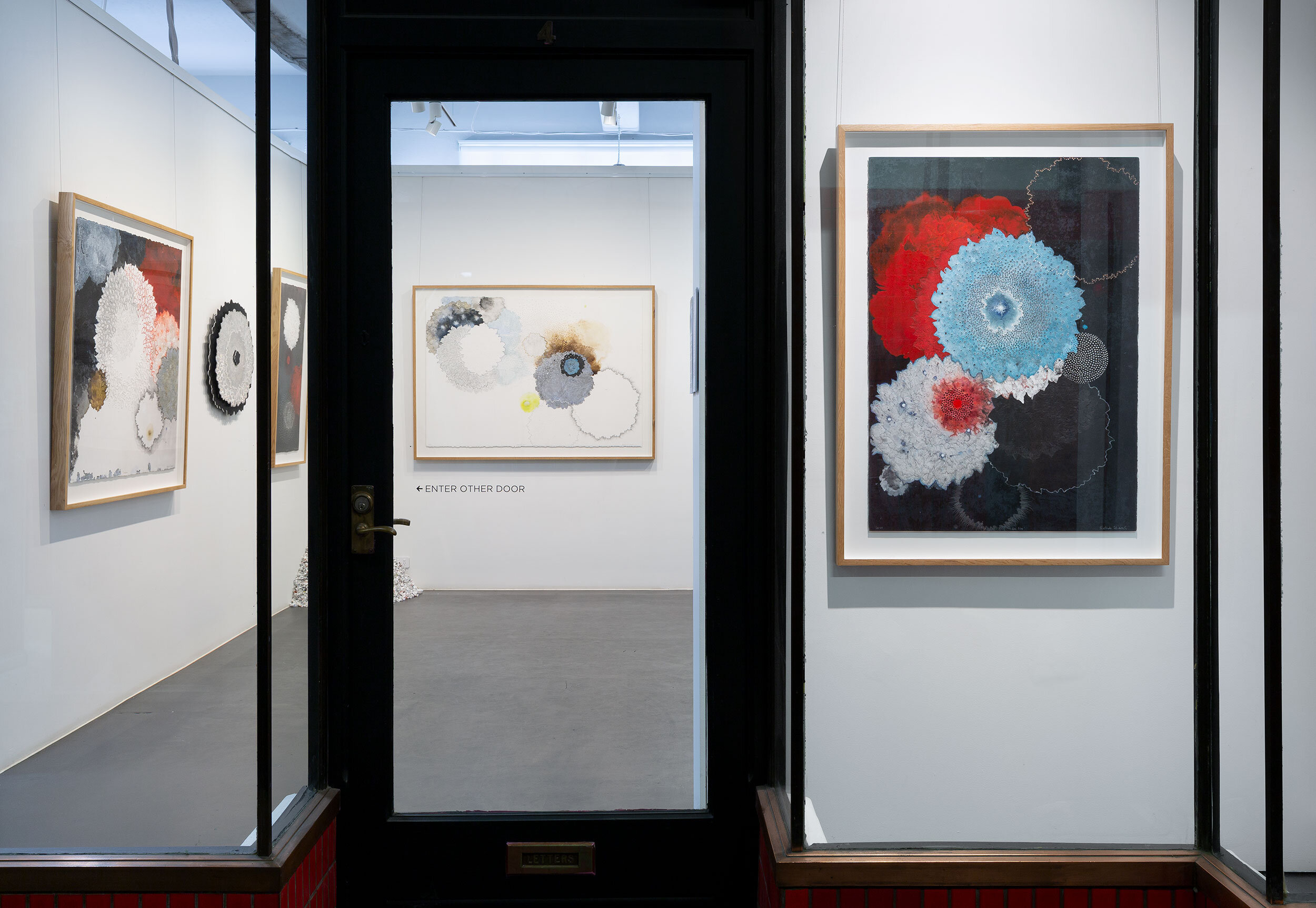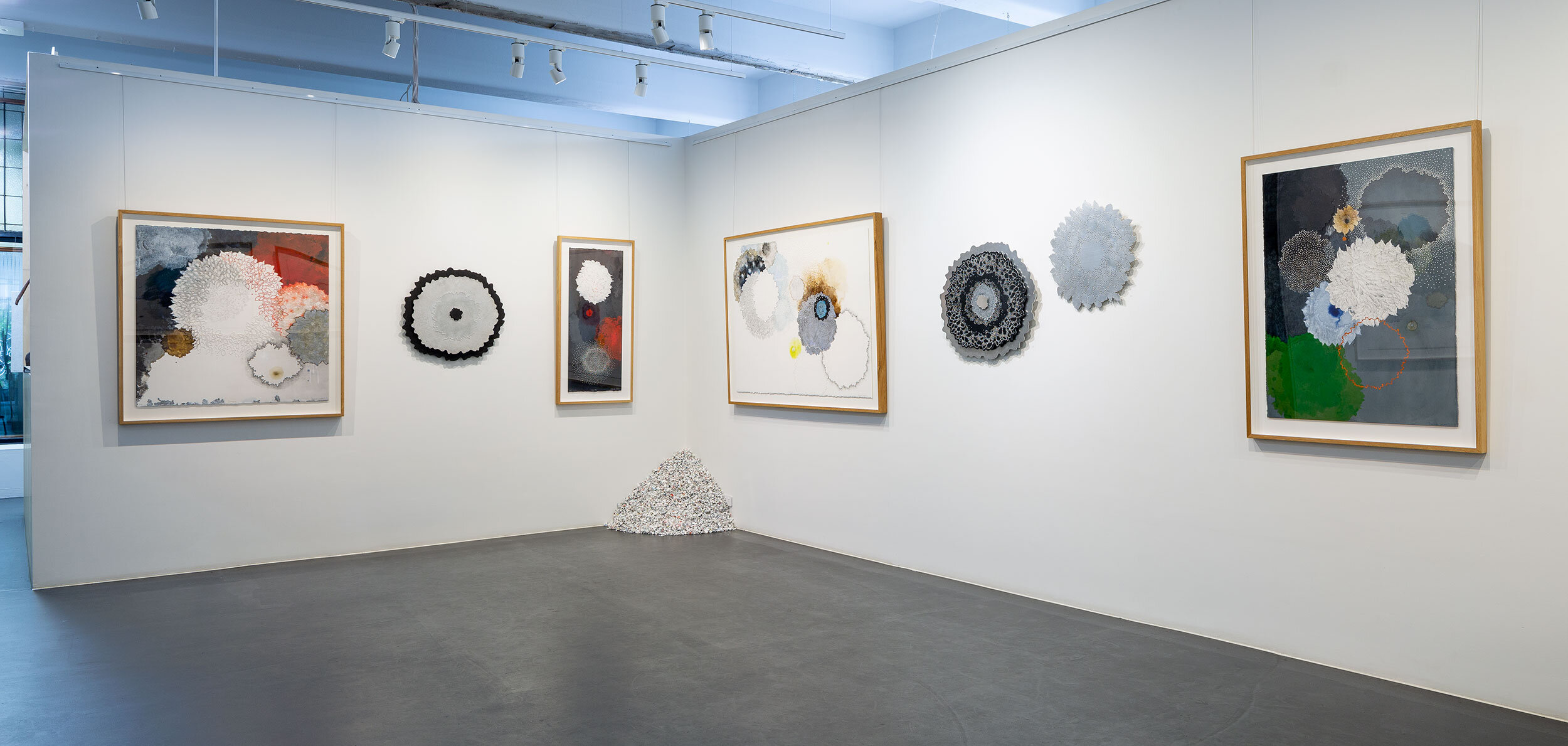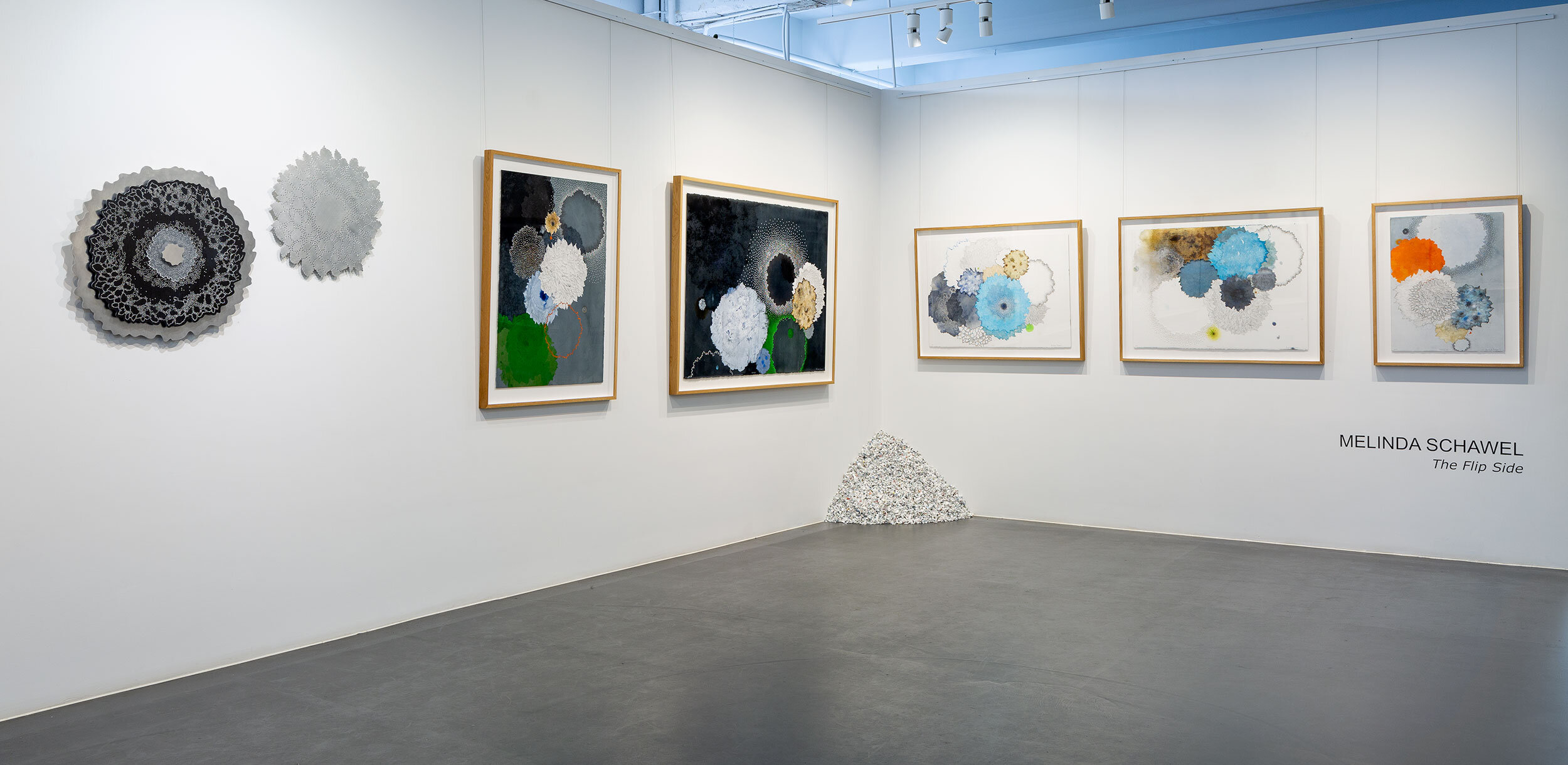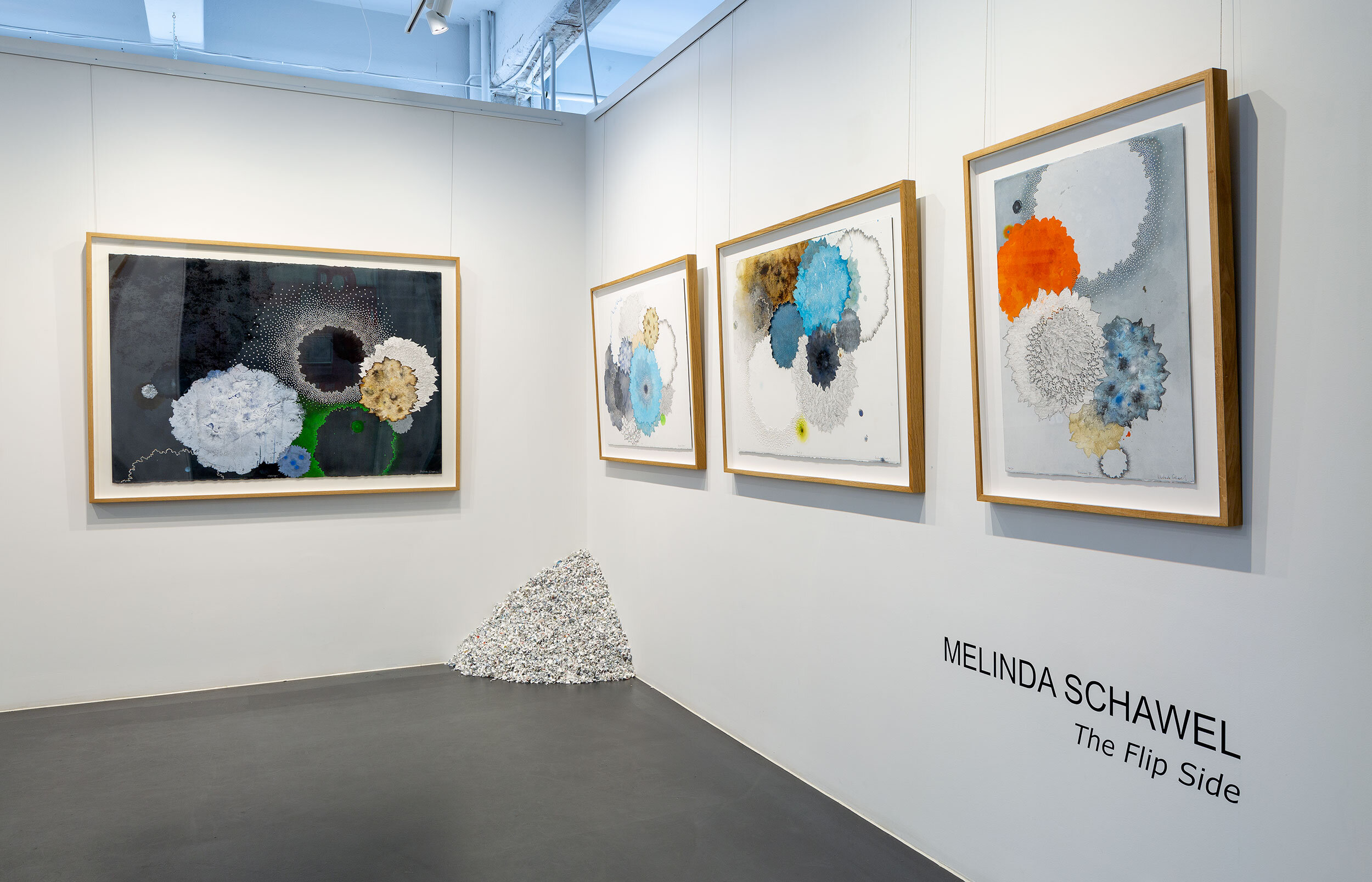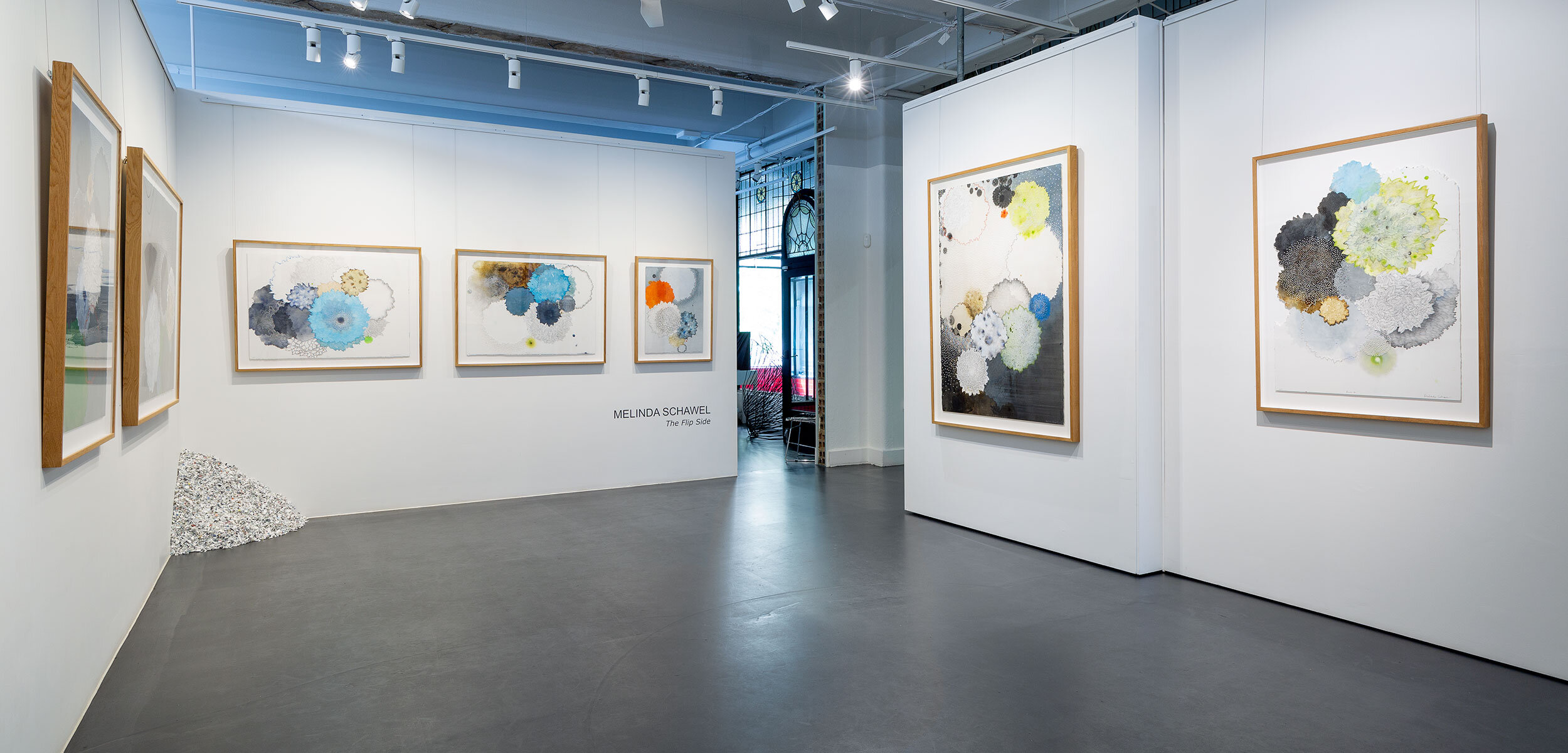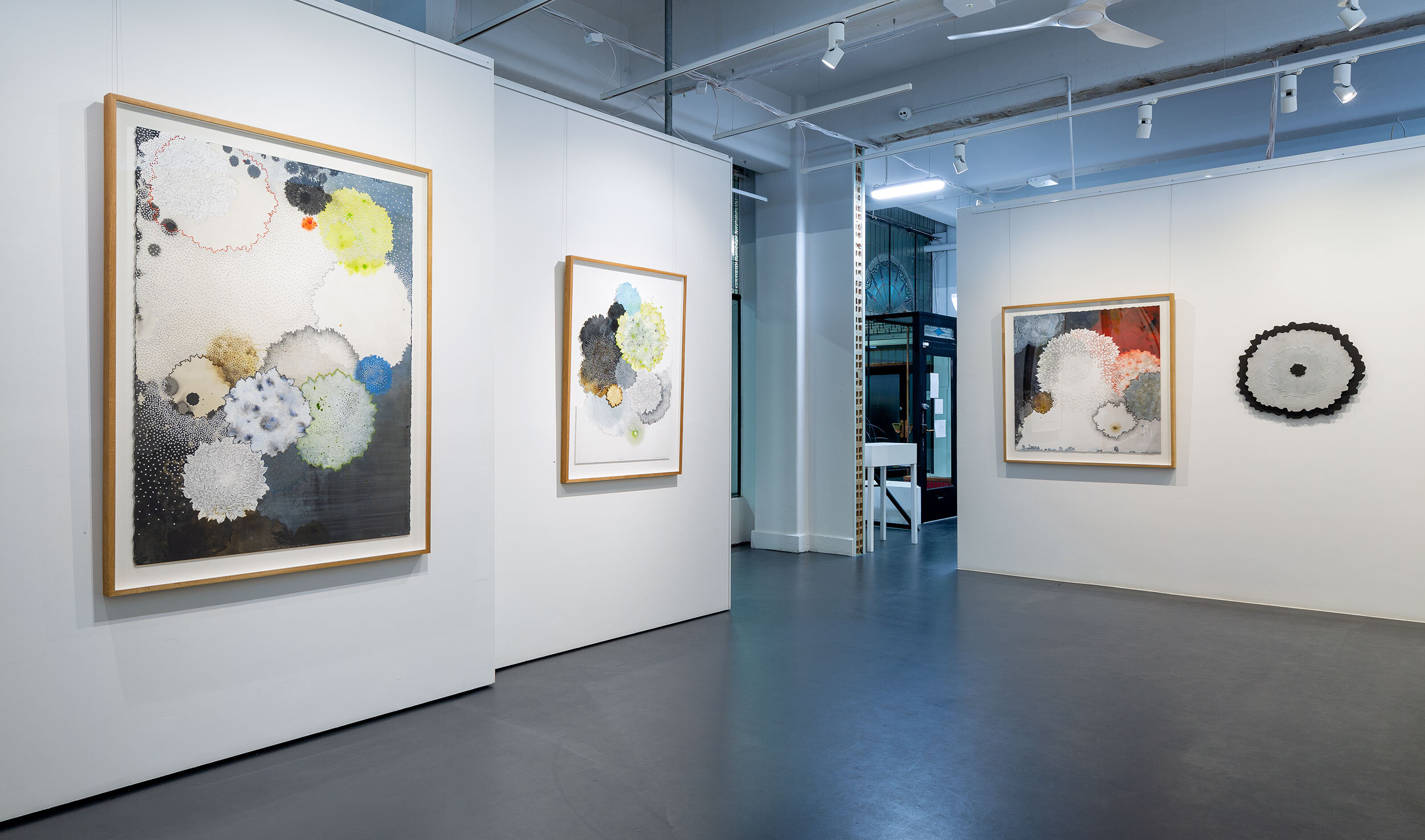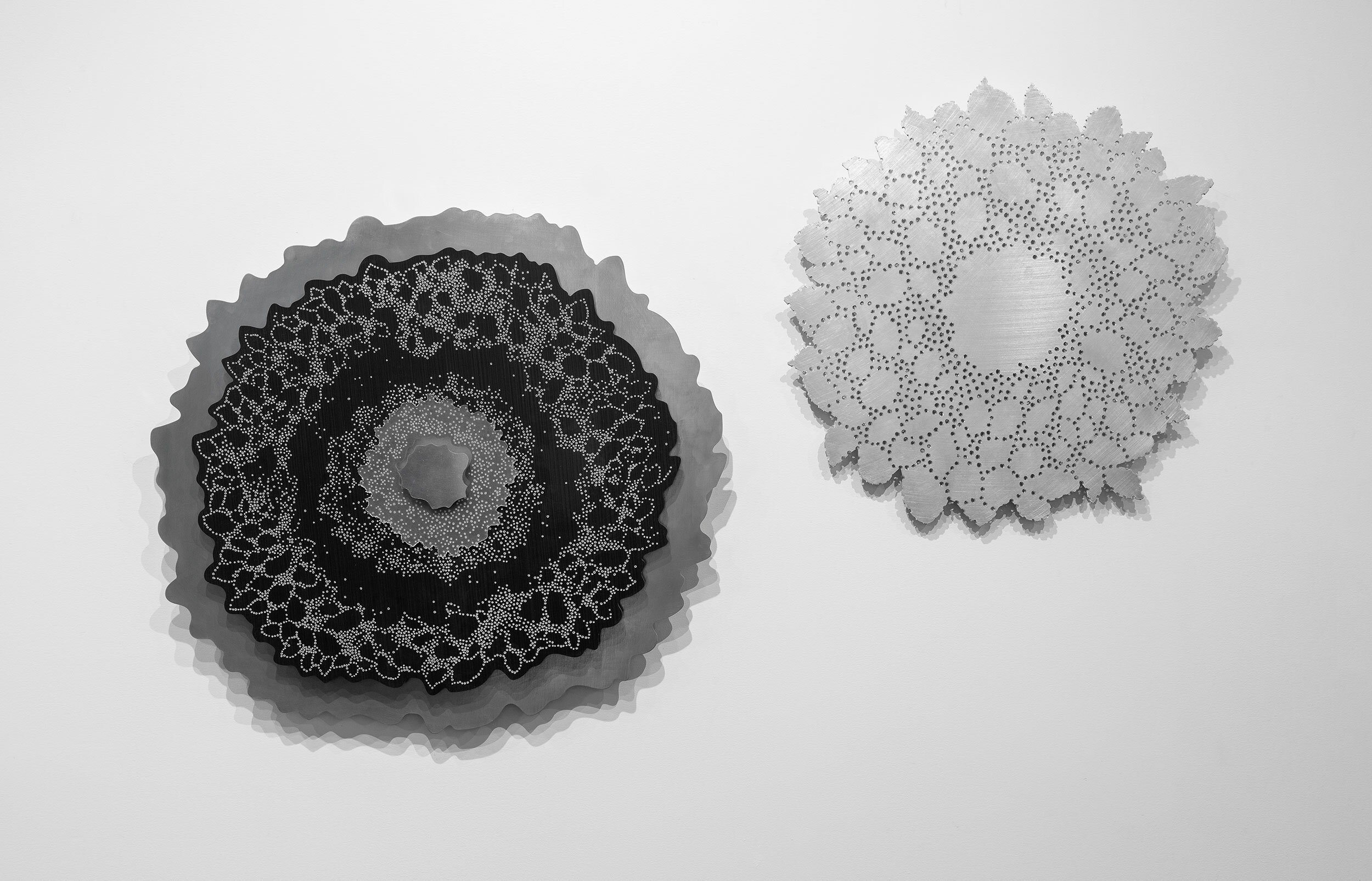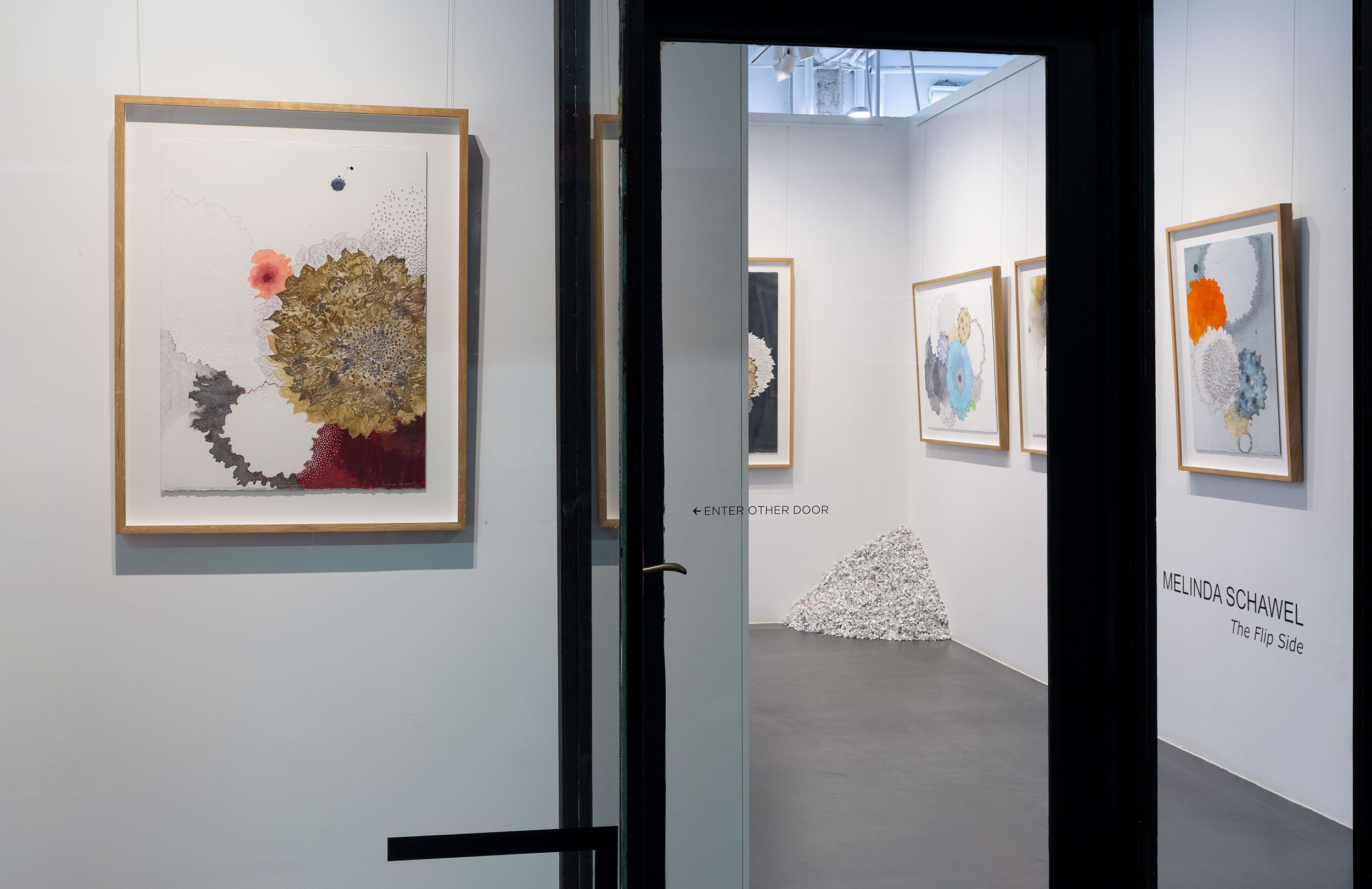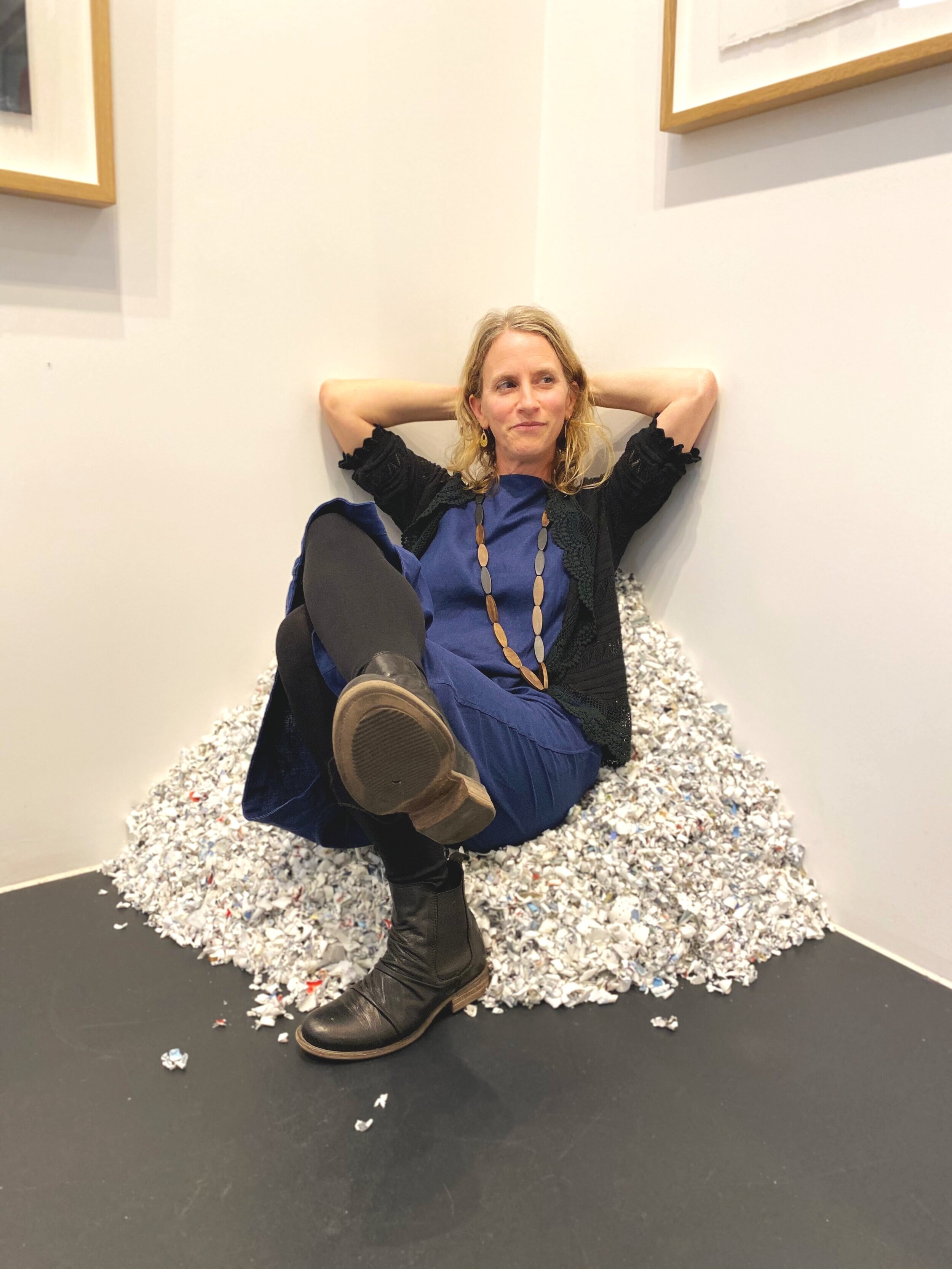The Flip Side 2020
photo credit: Christian Capurro, solo show at Flinders Lane Gallery 3-28 Mar, virtual tour
Catalogue Essay by Phe Luxford 2020
I am certain of one thing – if we do not strive to love our planet as much as we love ourselves, then no further human progress is possible here on Earth.
– Tim Flannery
Held within the cellular structure of all living things, a glimpse of the infinite is possible. Full of variation and adaptability, the creative force that drives the formation of all life on earth offers an endless source of wonder, possibility and reflection.
Never directly observational in their depiction, but rather emblematic of an imagined representation, Melbourne artist Melinda Schawel’s richly textured works on paper and metal serve to suggest the organic. Forms akin to lichen, coral spores, spider eggs, macrophages and pollen coalesce in a visual distillation of ecological proclivity.
Deeply affected by the environmental catastrophes currently impacting the Australian landscape, Schawel has recently found herself oscillating between a deeply negative and conversely hopeful outlook for the future. Channelling ideas of reciprocity between all life forms, her art practice articulates both an intense appreciation of those forms manifest within nature, and a sense of anticipation for the emergence of a new political and ecological ‘whole world’ view.
In an almost cathartic reaction to her own climate anxieties, Schawel (who has always invited elements of chance into her practice) has embraced a new level of the unknown by working both sides of her materials simultaneously. While much of Schawel’s alternating viewpoints are ultimately hidden within her final images, the choice to do so has nonetheless informed important steps within the creative journey. She speaks of a constant process of giving and taking, of responding to the unexpected, observing fine details and also stepping back to see the bigger picture. This constant shifting of view point suggests a somewhat vigilant, watchful state symptomatic of worry, as well as one of fascination. She states that “feelings of helplessness and despair will have inevitably seeped into these works, but the underlying message will hopefully be a positive one as I hold out hope for nature’s ability to flourish despite human ineptitude.”
Working within these alternating aesthetic negotiations, Schawel explores concepts of darkness and light, solidity and permeability, and states of instillation and impasse. This process of switching back and forth also serves to highlight the complex variety of conversations currently required within our community if we are to achieve a sustainable future. Images such as Maybe It’s All Going To Turn Out Alright echo the concerns held by so many of us as we watch these climate events unfold, and opens up a dialogue between ideas of doubt and optimism.
Within her highly saturated marks and relentless sculptural incisions everything is in a state of flux. We are witnessing nature’s endless state of adaption and change expressed through art. The Flip Side is thus a daily meditation, both contemplating the constantly shifting state of the environmental systems that sustain us, while also interrogating the failings and obligations of human adaptability.
